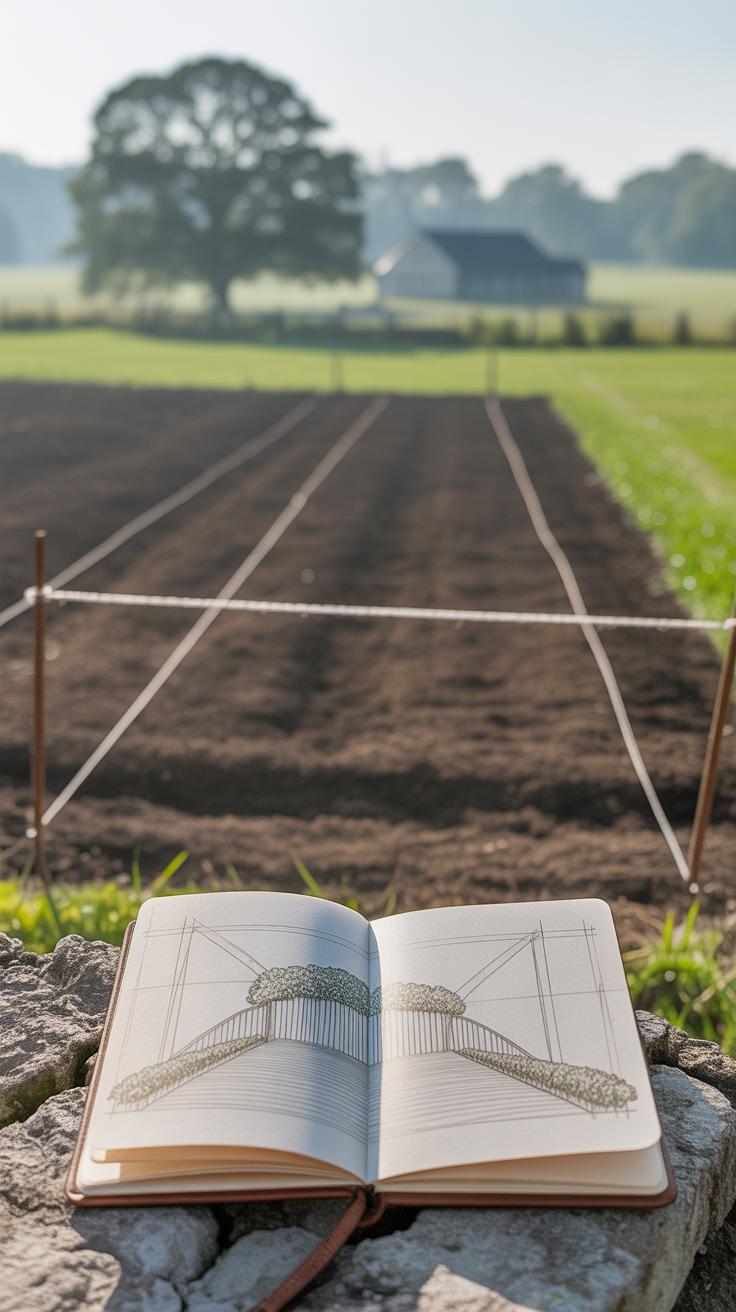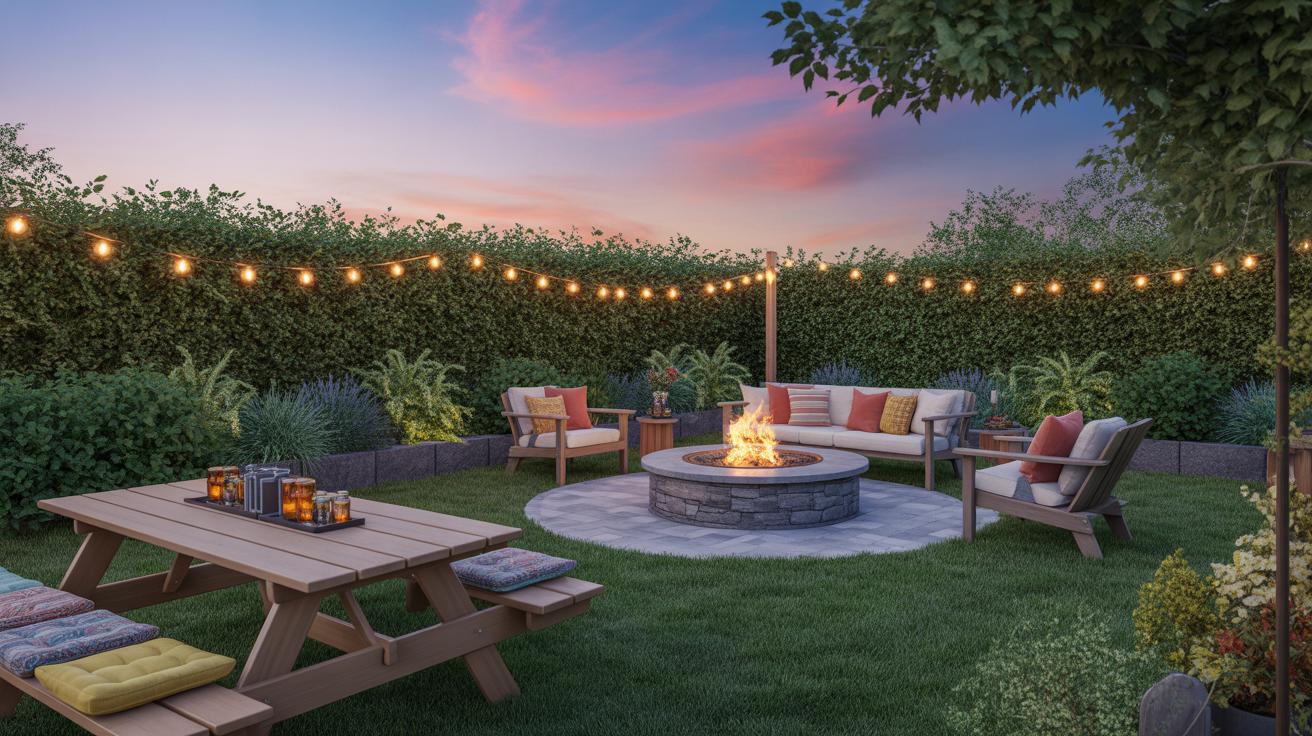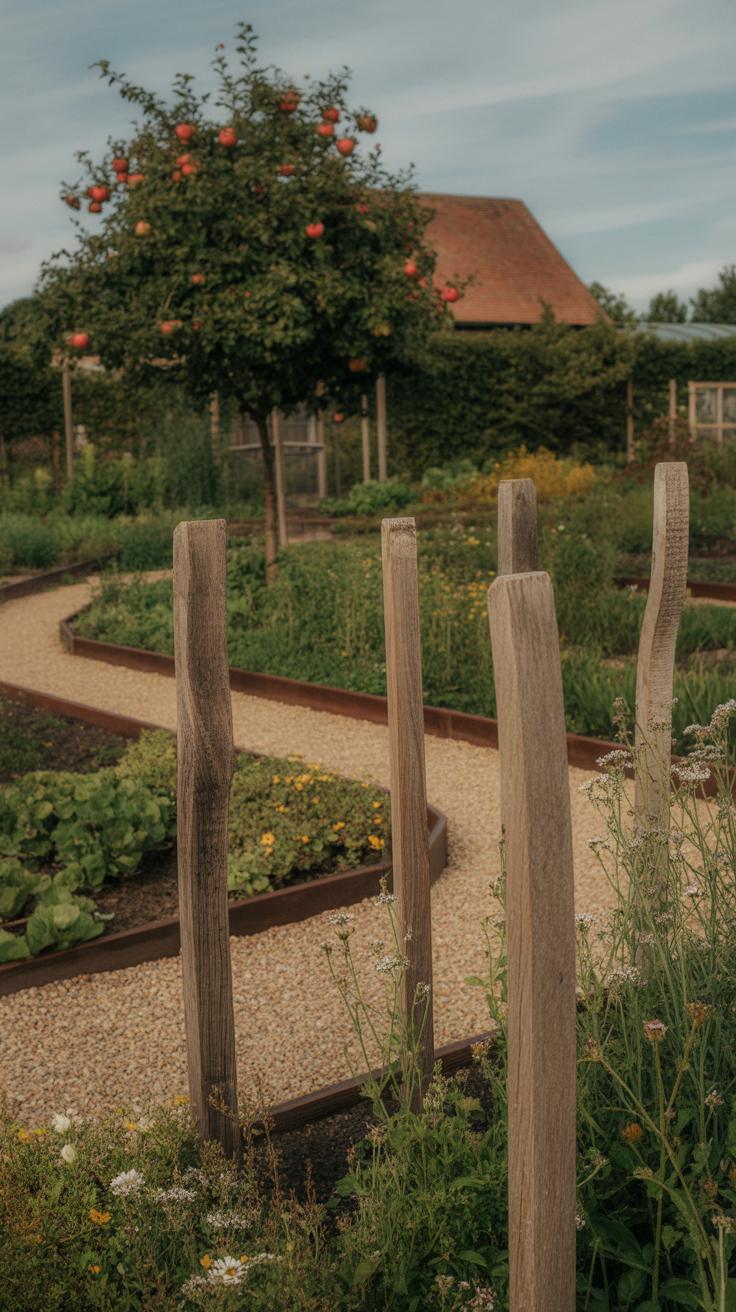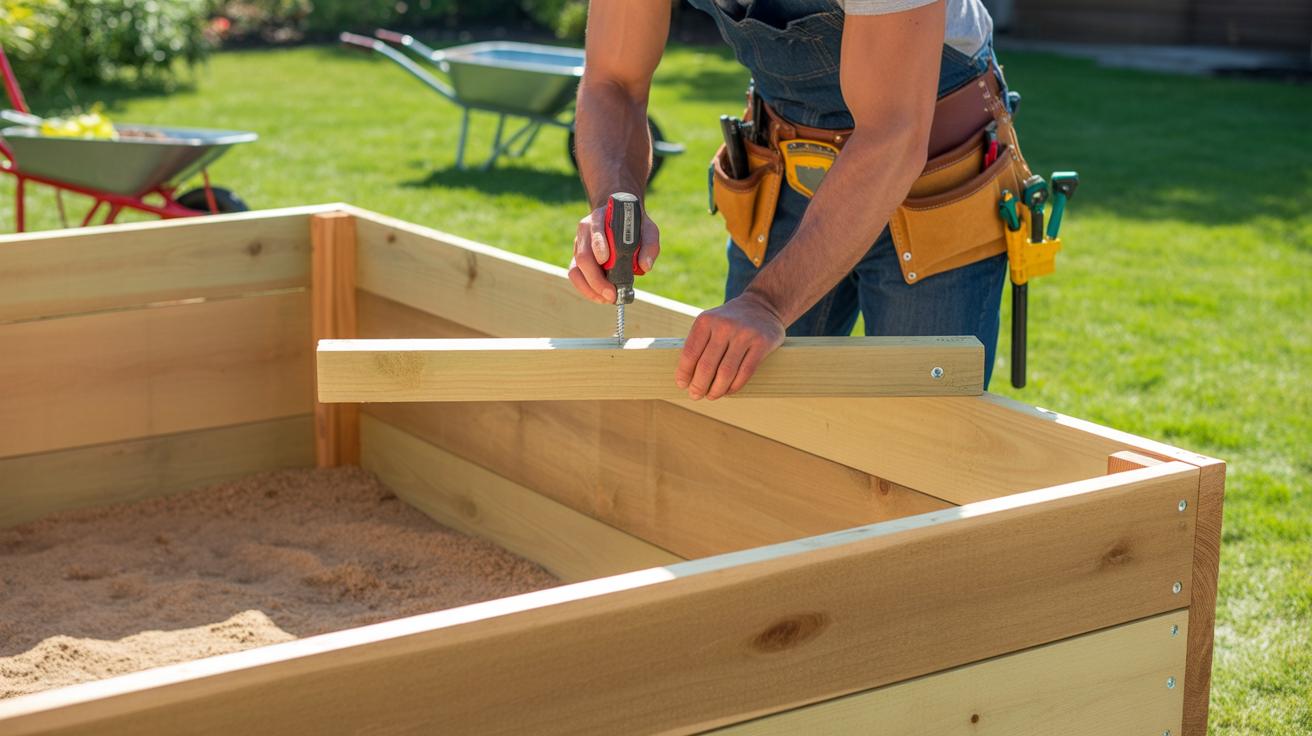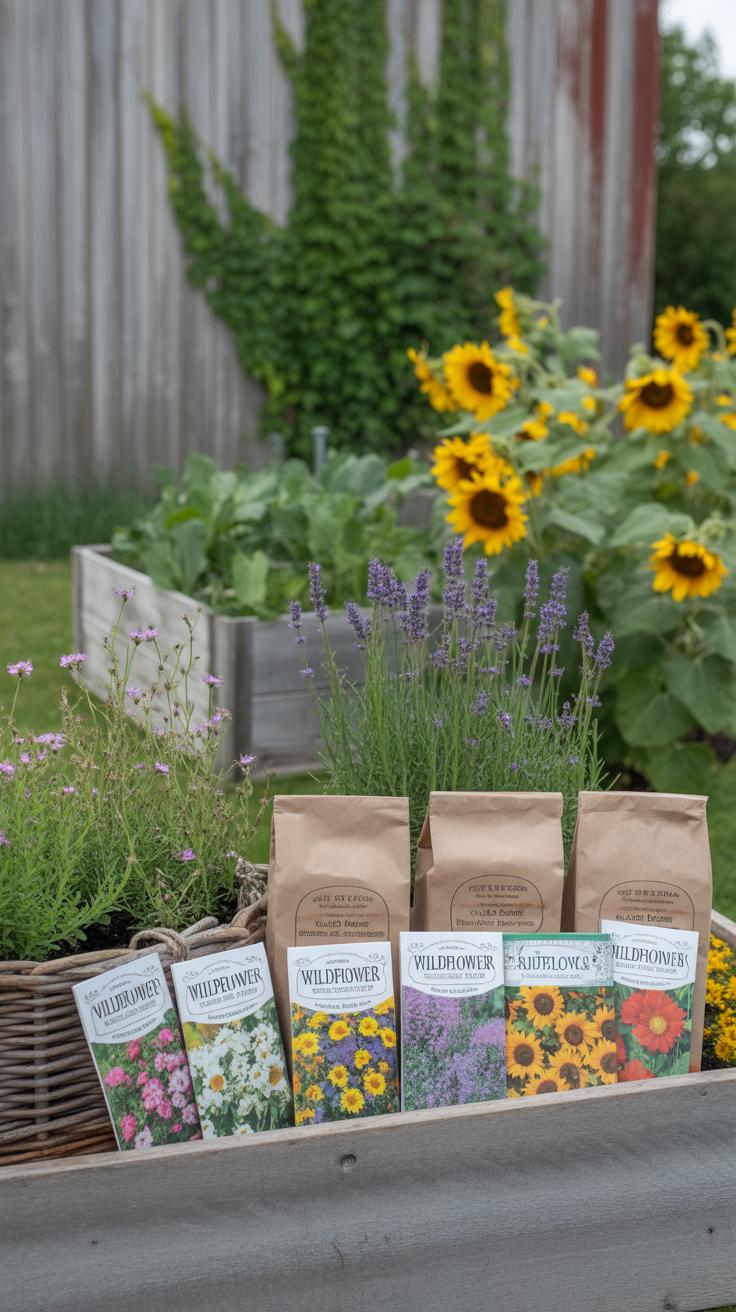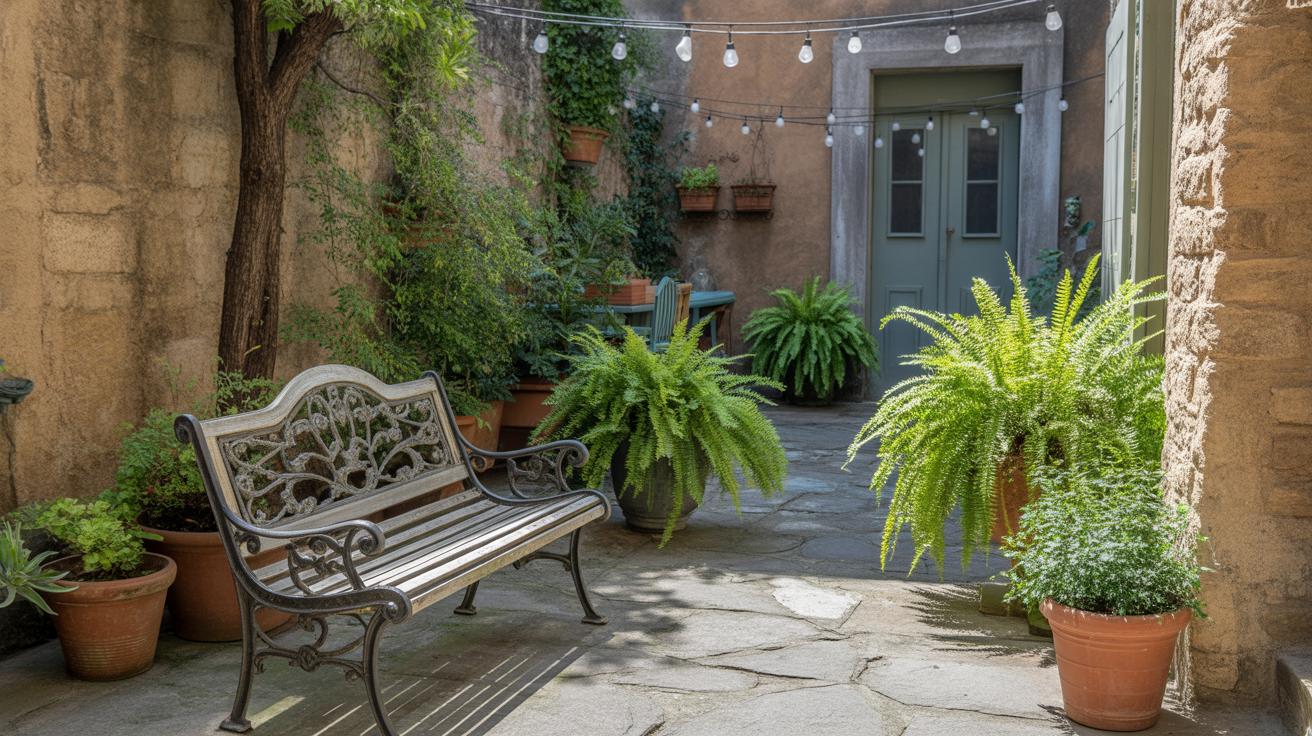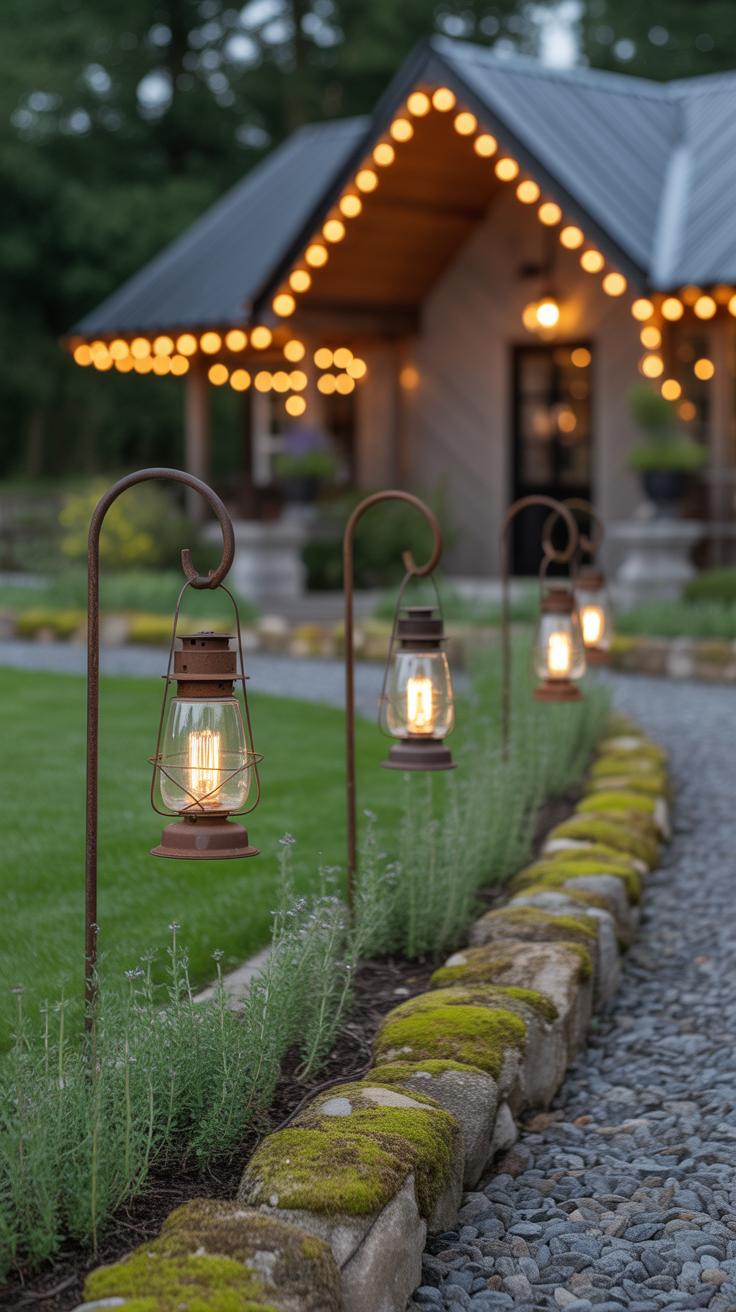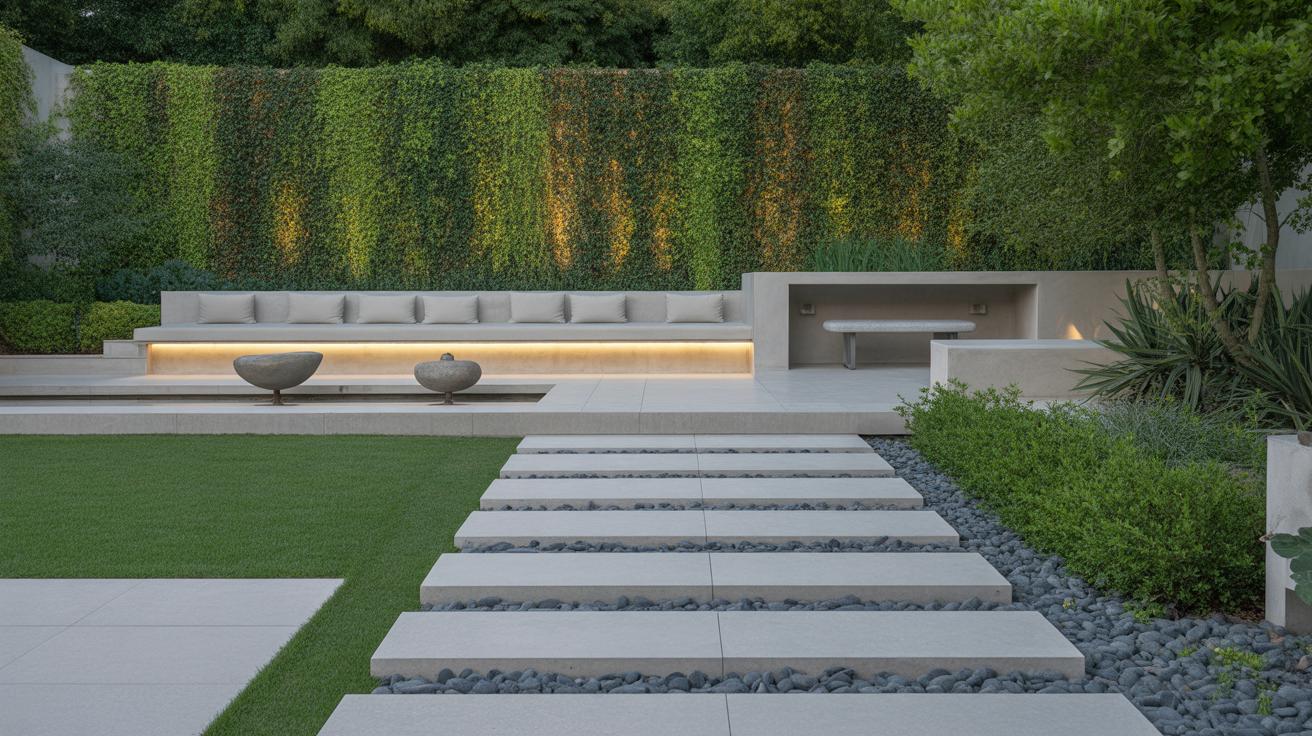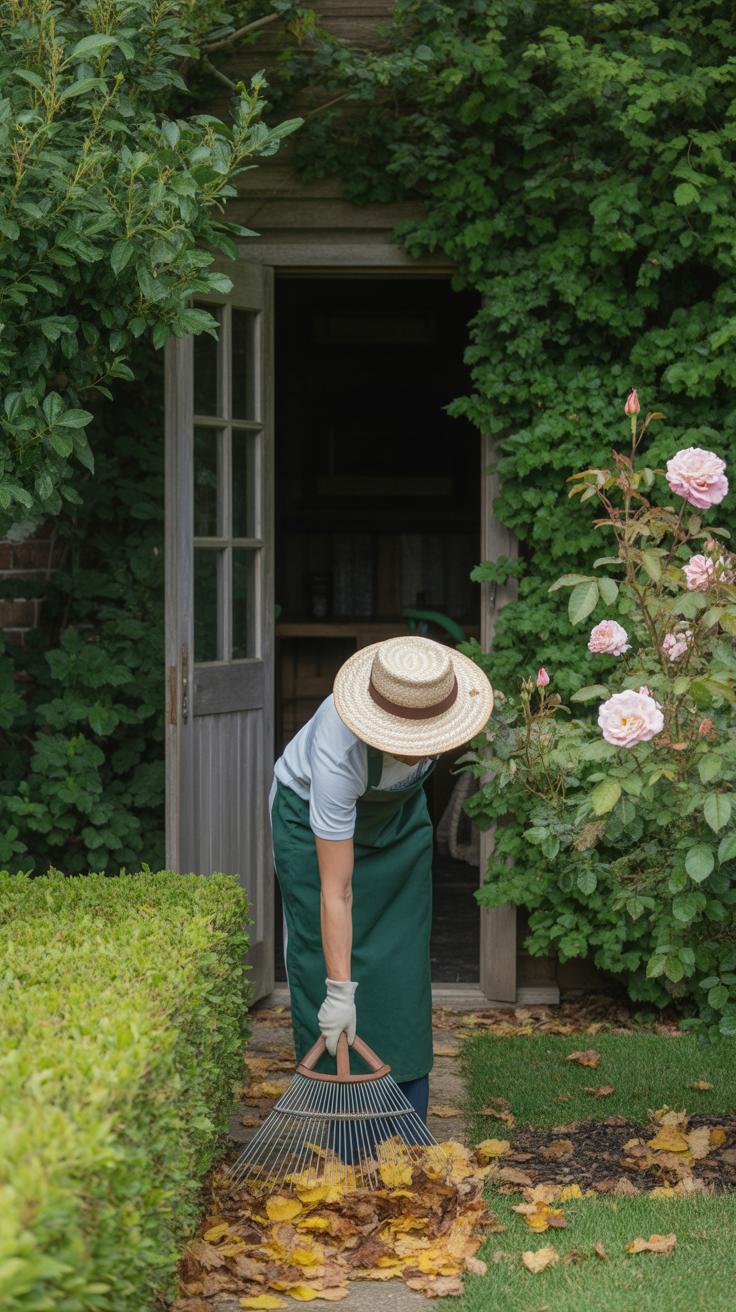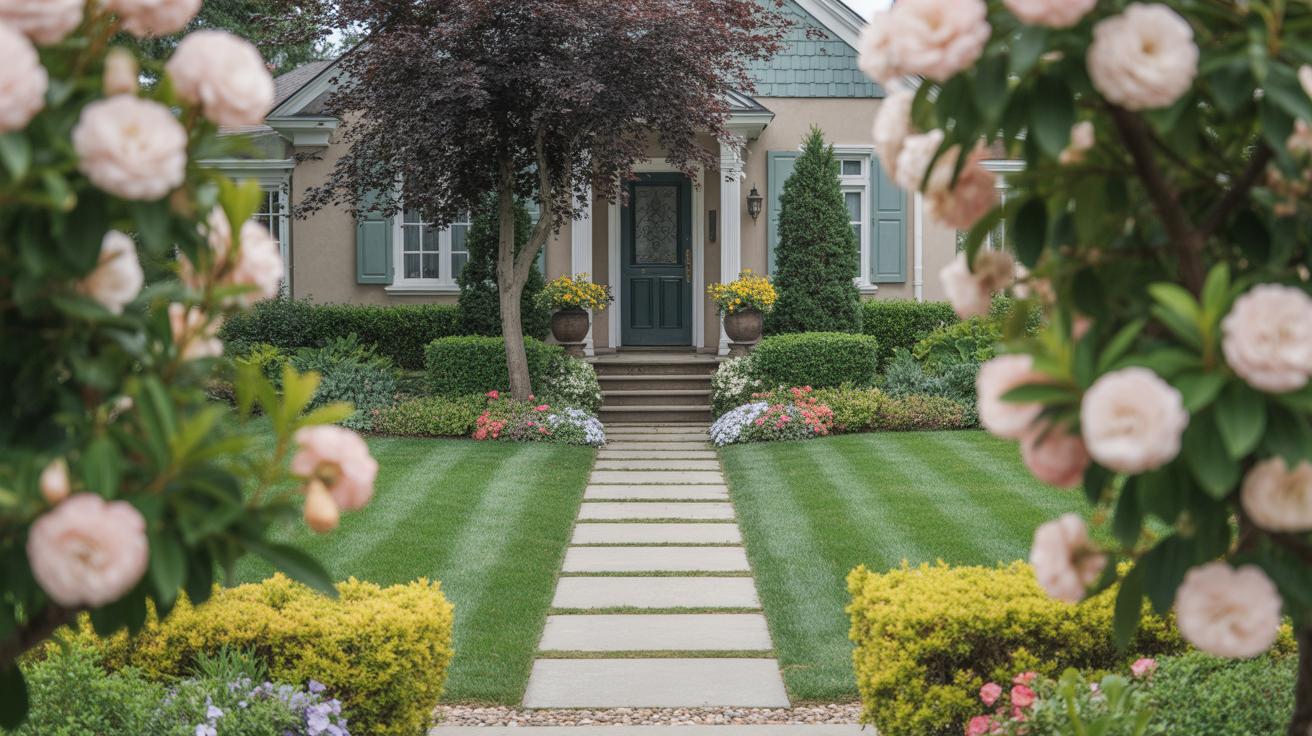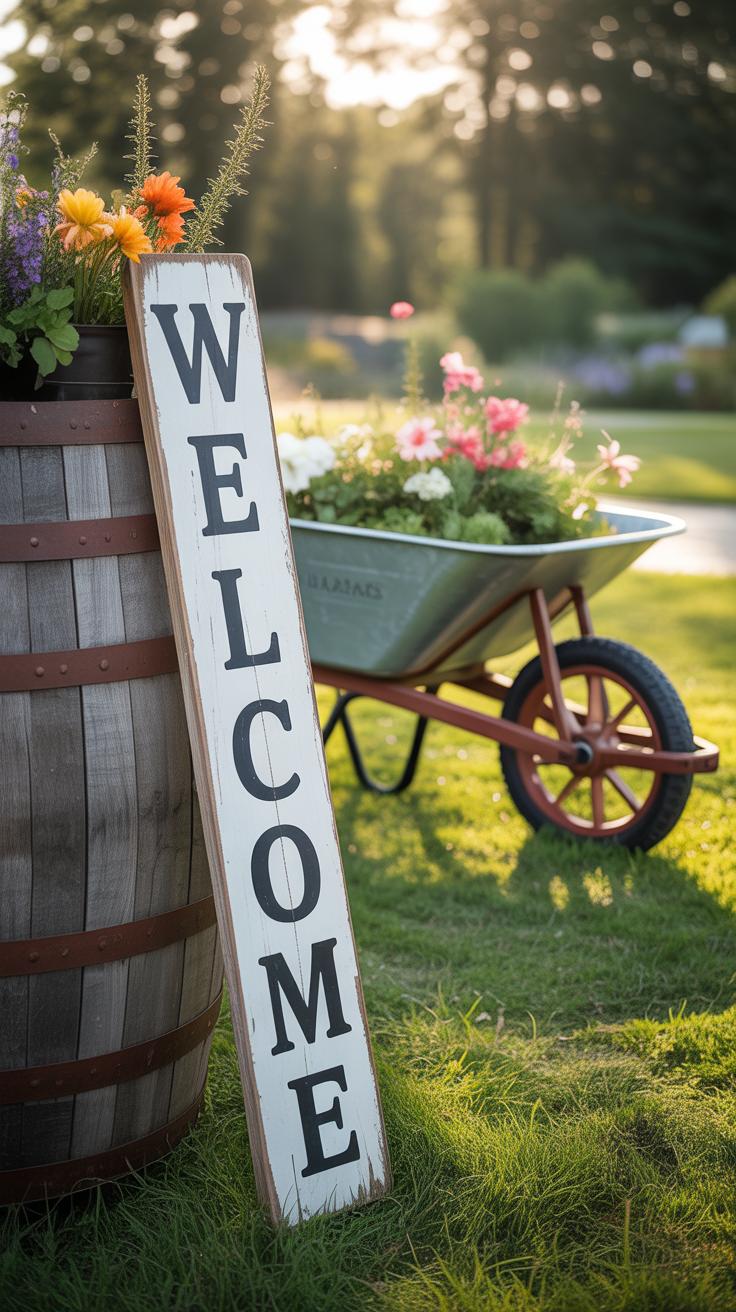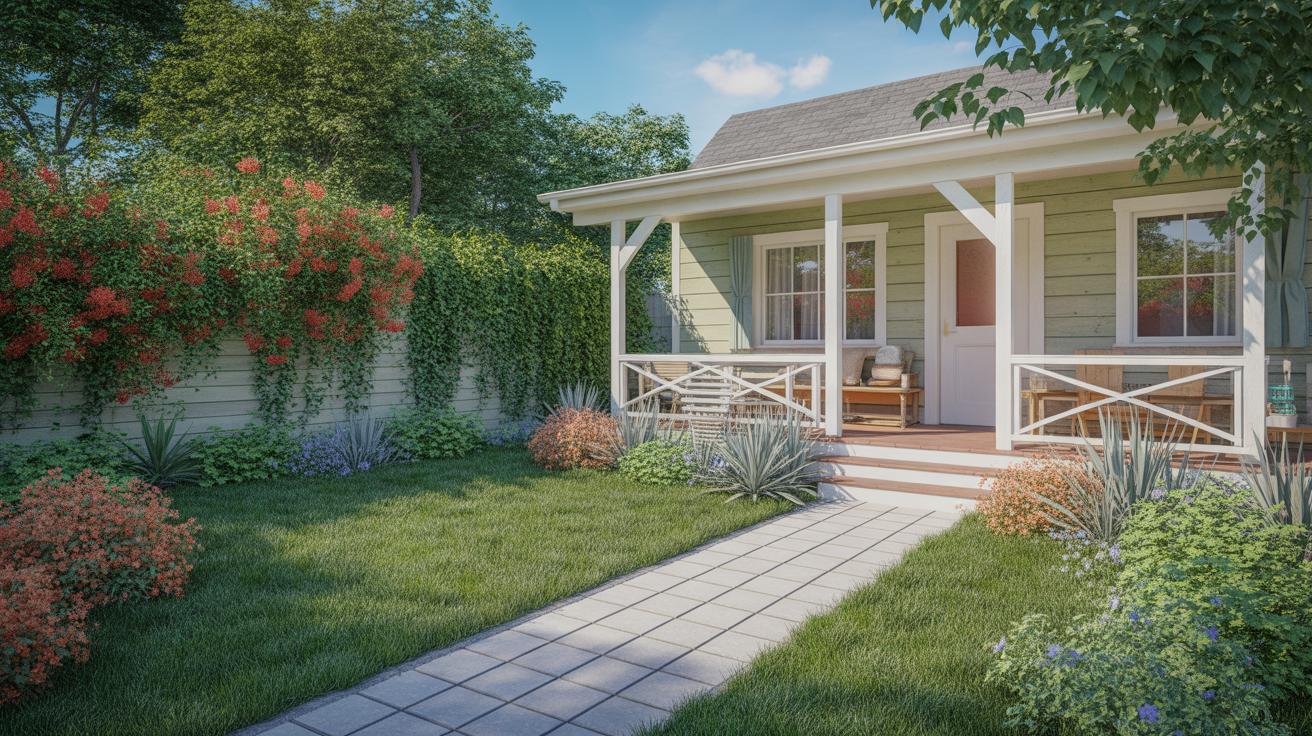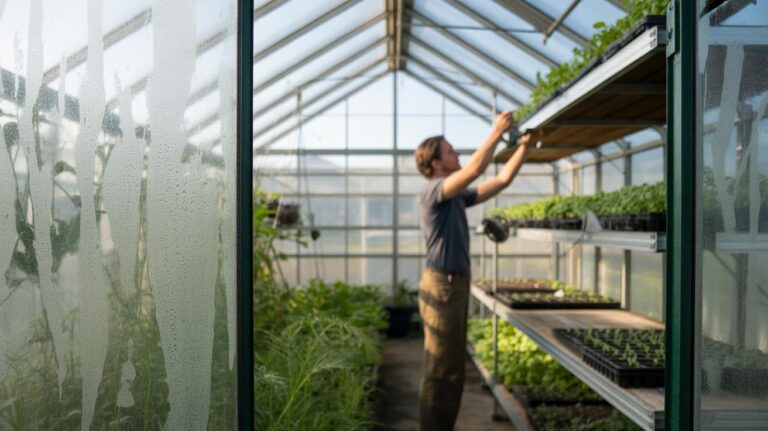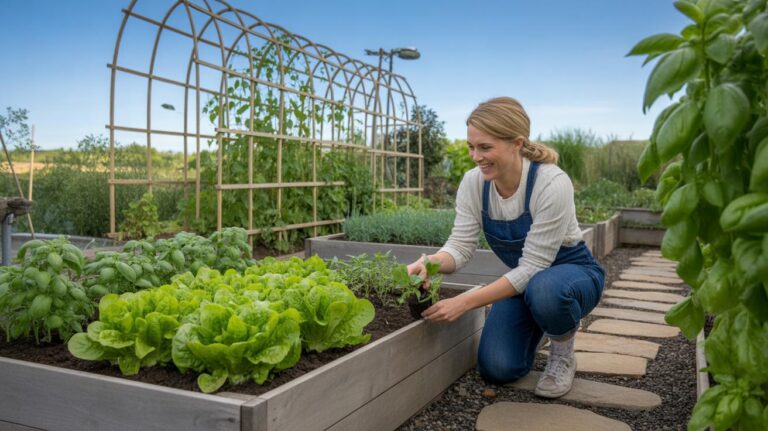Introduction
Your front yard is the first thing guests see and can set the tone for your whole home. Using rustic garden ideas helps you create a welcoming space. Rustic gardens often include natural materials and simple, charming plants that make your home feel friendly and inviting.
This article explores easy and practical rustic front yard garden ideas. From choosing plants to placing decorations, you will find ways to make your front yard a lovely place to enjoy and a great welcome for everyone who visits.
Plan Your Rustic Front Yard Layout
When planning your rustic front yard garden, it’s helpful to think about how the space feels rather than forcing strict symmetry. Rustic gardens often embrace irregular shapes and layering—they don’t try too hard to be perfect, and that’s part of their charm. You don’t want everything lined up in neat rows, but you also don’t want chaos. Finding that middle ground can be tricky but rewarding.
Start by observing the natural flow of your yard. Which areas get the most sunlight? Are there existing trees or rocks worth keeping? These features can become anchors rather than obstacles. Imagine your plants and features gently spilling around these spots instead of shoving them into neat boxes.
Think about including:
- Paths made of rough stone or gravel, laid unevenly yet intentionally.
- Clusters of simple plants like lavender, rosemary, or native wildflowers, rather than one type everywhere.
- Low fences or trellises crafted from reclaimed wood or rustic metal, imperfect but welcoming.
Leave room for small surprises like a weathered bench or a vintage watering can nestled among the greenery. These details help your garden feel lived-in, not staged. You might wonder if this makes the yard look messy—but I find it invites curiosity and warmth. That’s what a good rustic layout does: it creates space that feels natural and approachable, not overworked.
Rustic Front Yard Layout
Before planting a single seed or placing a stone, you need a clear sense of your front yard’s space. Grab a tape measure and sketch the area roughly on paper. Jot down the dimensions—length, width, any slopes or unusual shapes. Include permanent features like walkways, driveways, and existing trees. Mapping your yard helps prevent guesswork later.
When you look at your sketch, think about how people move through the space. Rustic gardens tend to feel informal, so strict symmetry isn’t necessary. Instead, aim for a balance that feels natural—uneven groupings of plants or an off-center path can work well. Flow matters; pathways should invite visitors in, not just cut straight through.
Focus on creating a focal point, but it doesn’t have to be grand. It could be a weathered bench, a rustic planter, or even a cluster of wildflowers. This draws the eye and gives your garden a purpose. Keep in mind, rustic style thrives on imperfection. So, a little randomness in plant placement adds charm.
As you plan, ask yourself what parts of the yard should feel open and which ones cozy. Sometimes a small nook with a few sturdy shrubs is more welcoming than a wide open lawn. Trust your instincts. And don’t hesitate to tweak the layout as you go along—your yard’s personality will reveal itself over time.
Select Appropriate Plants for a Rustic Front Yard
Choosing plants for a rustic front yard often means leaning toward those that feel natural and effortless. Native plants fit well here because they’re adapted to the local environment and usually need less care. They blend into the surroundings without seeming forced or too planned. It’s not just convenience; native plants tend to attract local wildlife like bees and butterflies, which adds life to your garden in a way that feels organic.
Besides being easier to maintain, native species often survive droughts or cold snaps better than exotic choices. You might find yourself watering less or skipping fertilizers more often, which is a small relief for busy homeowners.
Here are some plants that tend to work well in a rustic front yard:
- Lavender: Its muted tones and gentle fragrance fit the simple vibe well. Plus, it’s tough once established.
- Coneflower (Echinacea): A sturdy perennial with a wildflower look. It adds color without feeling showy.
- Ornamental grasses: Something like little bluestem or switch grass brings texture and movement, even in tough soil.
- Sage: Its dusty leaves look homey and weathered, not polished. And it usually resists pests.
- Wildflowers: Letting patches of native wildflowers grow can add spontaneity. They don’t need constant trimming.
- Daylilies: Low fuss and bright in summer, they lend a bit of cheerful unpredictability.
Picking plants that don’t demand constant pampering lets your garden age naturally rather than always feeling like it’s on display. That’s the charm of rustic—it lets you get away with a bit of “mess” without really being messy.
Use Natural Materials in Your Garden
When thinking about rustic front yards, natural materials feel essential. Wood and stone can shape the space without overpowering it. For example, rough-hewn wooden planks or logs work well as simple fences or garden borders. They don’t need to be perfectly cut or polished—sometimes, the irregular shapes add more character. Stone paths, too, can guide visitors in a charming, unpretentious way. I once helped a friend place flat river stones to create a walkway; the uneven spacing made the garden seem lived-in, in a good way.
Metal shows up less often but has its place. Rusted iron or weathered steel in gates or trellises can complement the rough wood and stone. It feels sturdy but still natural when it’s got some wear.
Rustic furniture and decorations should look as if they’ve aged with the garden. Think weathered bench seats, old wooden crates repurposed as planters, or handmade lantern holders made from twisted branches. These items help the yard feel like an extension of the home—a welcoming, lived-in space. Have you ever noticed how a battered wooden chair under an old oak tree invites you to linger? That’s the effect you might aim for.
Create Cozy Seating Areas
Choosing the right seating can really shape how you experience your front yard. Rustic styles lean toward simplicity and natural charm, so wooden benches or Adirondack chairs fit perfectly. These options aren’t just furniture; they invite you to stay a while. I’ve noticed wooden benches, especially those with a weathered look, add character without overwhelming the garden’s natural vibe. And Adirondack chairs, with their slanted backs and wide armrests, offer comfort that almost asks you to settle in with a good book—or just watch the world go by.
Where you place these seats matters just as much as the seats themselves. Ideally, you want spots that balance comfort with a nice view. A bench tucked under a blooming tree or near a cluster of shrubs can create a little nook of calm. Sometimes, it’s the unexpected angles that work best—maybe facing a quiet corner or catching the morning sun. I often find myself moving chairs around, depending on the season or the light. So, don’t hesitate to experiment a bit. It helps to think about how much shade you need, or which spots offer a pleasant breeze on warm days.
For example, in one small garden I worked on, placing an Adirondack chair beside a rustic wooden planter box created a perfect little retreat. The view of wildflowers filled the frame, and the rough texture of the chair matched the natural feel. Even a simple arrangement like this can turn your front yard into a place you actually want to spend time in. It’s not just about looks; it’s about making your garden a welcoming spot. What quiet corners in your yard would benefit from a seat? Which direction would you face, if you could sit for hours?
Add Rustic Lighting and Pathways
Using lighting and pathways in your front yard can do more than just guide footsteps. When chosen thoughtfully, they add character while making the garden safer after dark. Rustic lighting, in particular, blends function with charm. Think about lanterns made of metal or weathered wood—those always catch my eye. They can hang from hooks near the porch or sit along a garden bed, casting soft, flickering light.
Solar lights are another option, especially if you want something low-maintenance. You just pop them in the ground, and the sun charges them during the day. Their modest glow won’t blind your eyes but will outline a path beautifully. Candles in glass holders can work too, but I find they’re best for occasional use—like a quiet evening, rather than every night.
For pathways, materials that feel natural make the biggest difference. Gravel is affordable and easy to shape around plants, creating a casual look that invites wandering. Stepping stones break up the space nicely and can connect different parts of your garden. I once laid irregular flagstones spaced apart and filled gaps with moss—sort of rustic but still tidy. It’s not about precision here; paths should seem like they belong to the garden, not forced onto it.
Consider lighting along these paths, coordinating with your rustic fixtures. Does the soft glow from a lantern at the curve of a gravel path make you want to explore just a bit more? Probably yes, and that’s exactly the point.
Maintain Your Rustic Front Yard Garden
Keeping your rustic front yard garden in good shape doesn’t have to be a big chore. One thing I’ve found helpful is setting a simple watering routine. Most rustic plants do well with deep, less frequent watering rather than daily light sprays. This helps their roots grow stronger and encourages drought resilience, which is kind of handy if you tend to forget sometimes.
Improving your soil can feel tricky but is really about small steps. Adding organic matter like compost or well-rotted manure boosts drainage and nutrients. You might be surprised how much a little bit changes the health of your plants. Just be careful not to overdo it—too rich soil can make some rustic perennials too lush and floppy.
When it comes to pruning, think of it as shaping your garden’s personality. Light trimming keeps plants tidy and encourages fresh growth. Removing dead stems also prevents diseases and mess. I like to prune after flowering to avoid cutting off next season’s buds. Your timing might vary depending on what’s growing, but don’t stress too much about being perfect.
Cleaning up leaves and fallen debris regularly helps maintain that welcoming look. A quick sweep or rake removes clutter and stops pests from settling in. Plus, it’s an easy way to connect with your garden, kind of like a little check-in on how things are doing.
Ask yourself: Are you noticing which spots dry out fastest or where new growth seems weak? Observing these little details can guide your care without needing a strict schedule. Your rustic garden will thank you for the attention—it’s not about precision but consistency.
Incorporate Personal Touches in Rustic Style
Adding your own personality to a rustic front yard garden makes it feel like… well, yours. Maybe you have some old wooden crates lying around, or an unfinished birdhouse project gathering dust—these can become charming garden features with minimal effort. Simple DIY projects, like painting small pots in soft, earthy tones or crafting wind chimes from natural materials, bring that subtle uniqueness that store-bought decorations just can’t offer.
Think about the family heirlooms you might have tucked away. That weathered metal watering can from your grandmother or a rusty garden trowel can find a second life nestled among plants or hanging on an old fence. They carry stories and nostalgia that a new planter never will. Placing these items thoughtfully—like a vintage wheelbarrow doubling as a flower bed—can add depth and emotion to your garden’s rustic vibe.
What small object might you sneak in that means something to you? Even the simplest piece can spark curiosity and warmth for visitors—and sometimes those personal touches make the garden feel incomplete if left out. So, don’t hold back. Your front yard is a quiet stage for your memories and creativity mixed into the earth.
Conclusions
Rustic front yard gardens create a cozy and natural look for your home. By using the right plants, materials, and design ideas, you can build a space that feels warm and welcoming. Simple choices like wooden planters and native plants make a big difference.
Take time to plan your garden and pick things that match your home and environment. Your rustic front yard garden will then become a favorite part of your house, impressing visitors and giving you joy every day.


